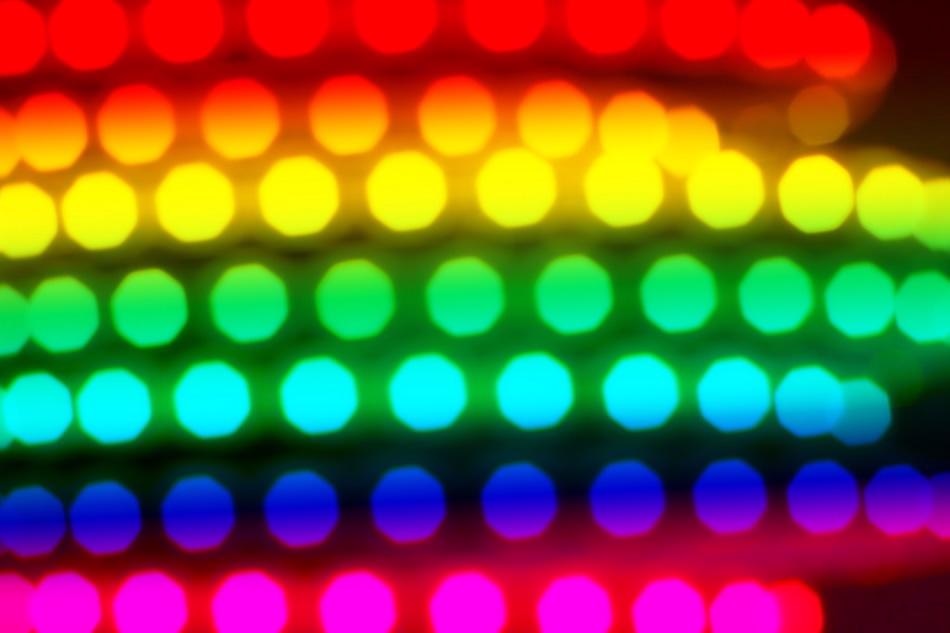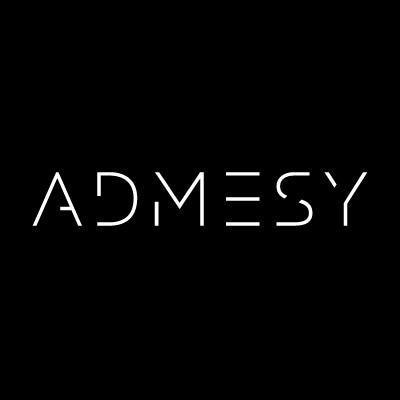Sponsored by AdmesyAug 10 2018
Light Emitting Diodes (LED) are becoming increasingly popular due to their energy efficiency, longevity and affordability. It is believed that the growing LED market will account for nearly 70% of total lighting by 2020, with revenue of nearly US$ 54.28 Billion.

Image Credits: Foto-Ruhrgebiet/shutterstock.com
LEDs are known for their low power consumption and long lifetime (50,000 to 80,000 hours), but there are still some issues when it comes to the materials they are built from. In this growing market, it is vital that manufacturers of LEDs can certify the quality and versatility of their lighting products.
Colored LEDs
The color of an LED is attributed to the type of semiconductor alloy that they are made from. Red, green and blue LEDs are therefore all made of different alloys, and so each one possesses different thermal, optical and electrical properties.
The light output of an LED can also change with temperature, as the p-n junction heats up and the intensity of the light is reduced. This shifts the wavelength peak and thus subtly alters the color, which can affect lighting quality in many color-mixing applications.
This problem can be solved through an RGB driver that keeps an RGB LED at a constant brightness, irrespective of its required output color. Additionally, the perceived (mixed) color should remain the same during dimming or over time when LEDs degrade in intensity.
Why LED Measurement can be Challenging
As LED technology grows, new challenges appear that must be tackled by the industry. A recent problem in measurement has arisen, as new generation LEDs operate at a much higher power density than those before. This concentrates the heating effect and results in heating at LED junctions as measurement takes place, making accurate measurement of LED performance difficult and thermal stabilization of LEDs inevitable.
As the semiconductor junction temperature increase, LED efficiency decreases. This is due to the effects of drive current and can the output of a typical white LED can drop 20% for a 50°C rise in temperature. This is a result of decreasing phosphor conversion efficiency at high temperatures. Some measurements are more affected by the efficiency-drop-induced change than others, i.e. color shift, brightness or flux.
Although applying active or passive cooling can reduce heating, heated junctions and phosphors still produce less light which results in a shift of the peak wavelength. These are base-level problems for R&D and manufacturers as these changes in the conditions will affect the measured data. If two labs have two different readings for one type of LED it makes it difficult to apply an accurate rating at its true output.
In an effort to increase reproducibility, the Illuminating Engineering Society of North America (IESNA) and the International Commission on Illumination (Commission International de l'Éclairage – CIE), have both developed standard methods to link measurements to a specific junction temperature.
However, these methods depend upon precise timing and thermal control platforms and they could intrinsically introduce error and poor repeatability. One answer to this problem is using the Continuous Pulse method.
This method uses low duty cycle pulse trains to power the LED with high-fidelity current pulses and provide accurate measurements. There is also a significant advantage in making a series of measurements together on a single integrated instrument to attain an accurate benchmark and attain consistency.
The Rhea and Asteria for Accurate LED Measurements
For configuring measurements in the range of 200 and 1100 nm Admesy now offers the flexible spectroradiometer platform, the Rhea. With various choices in slit size, gratings and sensors it enables total flexibility towards the optical application.
The Rhea can also be customized with a number of optional add-ons such as collimating lenses, cosine correctors and fiber connectors in order to connect to integrating spheres. For very high sensitivity measurements it the instrument also has a cooled (-10 °C) high-end CCD detector.
The Rhea is configurable for detailed assessment of an LED or luminaire, perfectly suited for operating in the visible range (380-780 nm) as well as measuring output of UV driven white LEDs or near infrared LEDs for combined applications in horticulture.
Admesy’s Asteria light meter is an ideal and straightforward device, enabling rapid flicker measurements according to different standards such as flicker index, percentage and IEEE PAR 1789.
Flicker measurements in the range up to 20 kHz (waveform depending) during development, manufacturing and incoming inspection are a breeze thanks to its high sample rate of 186.567 samples per second.
References & Further Reading
- Yoshi Ohno, Optical metrology for LEDs and solid-state lighting, Fifth Symposium Optics in Industry, edited by E. Rosas, R. Cardoso, J. C. Bermudez, O. Barbosa-García, Proceedings of SPIE Vol. 6046, 604625, (2006)
- Jeff Hulett, Ensure your light measurement method doesn't undervalue your LEDs, LED Magazine, March 8, 2017
- Zion market research, LED Lighting Market for Residential, Architectural and Outdoor Applications: “Global Industry Perspective, Comprehensive Analysis and Forecast, 2016 - 2022”
- Understand compatibility, performance, and dimming issues in LED lighting, LED magazine, Vol 2 (6)
- G.-H. Ryu and H.-Y. Ryu, "Analysis of the temperature dependence of phosphor conversion efficiency in white light-emitting diodes," J. Optical Society of Korea, Vol. 19, No. 3, 311-331, June 2015.

This information has been sourced, reviewed and adapted from materials provided by Admesy.
For more information on this source, please visit Admesy.